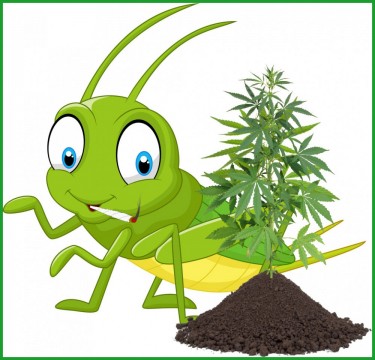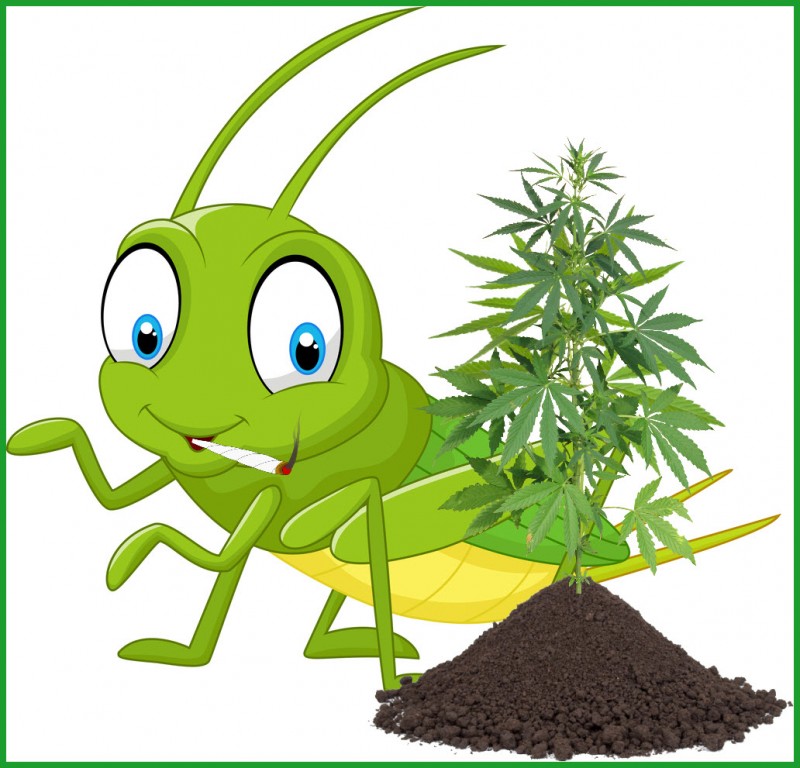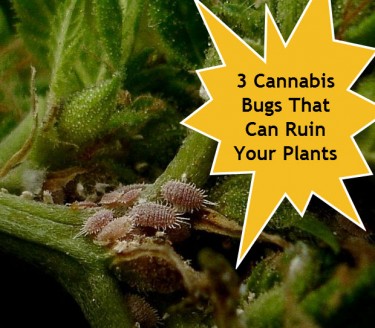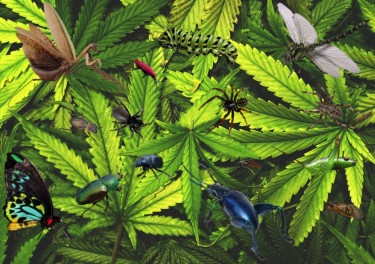How to Protect Your Cannabis Plants from Grasshoppers

HELP!!! Grasshoppers are eating my cannabis plant, and I don’t know what to do. It can be exceedingly hurtful seeing all your hard work with grooming your cannabis go to waste because of grasshoppers. Luckily, you don’t have to worry about this anymore because we’ve got the answers.
Cannabis is one of the most talked-about topics in America and around the world, as different states legalize its use. People are taking advantage of the legalization status to grow cannabis. However, as it is with all agricultural investments, there are risks and rewards.
Rewards come in the form of fantastic cannabis plants that give you access to weed, and the risks can also be grasshoppers who want to feast on your plants.
Grasshoppers enjoy eating weed plants, so there is no time to complain about this; you need to learn how to curb these excesses. With this guide, you will know how to identify grasshopper damage signs and how to prevent them from showing up. Interestingly, you don’t need any severe chemical intervention to protect your plants from a grasshopper invasion.
The importance of protecting your cannabis plants
A cannabis plant is a VALUABLE investment: it takes time to groom the plants, and if it is for commercial purposes, you will have to be intentional about protecting the plants.
A well-groomed cannabis plant can become a significant source of income for anyone who gives their best to the project. If you also use cannabis and want to have access to fresh products every time, your farm is a viable investment.
With such farms, there are great expectations, and pests will patrol your garden searching for cannabis flowers, leaves, and juicy stems. Grasshoppers are the most problematic of the pests ad you need to understand how to curb their menace.
Get to know the grasshoppers.
Grasshoppers have a unique appetite for fresh cannabis; they are the oldest living group of herbivores (chewing insects) and can cause lasting damage to your crops. Grasshoppers are voracious in their approach to cannabis plants and can wipe off an entire field without control.
They have an innate inclination to the cannabis juicy stems and leaves and use their mouthpieces to remove parts of the plant. Over time, you will find that your plants have lost their value, experience stunted and other fatalities.
The damage from grasshoppers causes harm to the cannabis plant, and although your plants provide food for the pests, you will want to protect your investment.
How to identify damage from grasshopper attacks
As a cannabis grower, you must know how to identify the various damage caused by pests as different pests leave further injuries on the plant. Here are some apparent signs of a grasshopper attack:
-
More wildlife presence
When grasshoppers invade your plants, they also send an open invitation to other animals who love to snack on grasshoppers. You will also start to see more rats, birds, and foxes on your farm, searching for grasshoppers.
-
Brown and dry leaves
Aside from the fact that dry and brown leaves are not aesthetically pleasing, they also cause a lot of stress. Leaves become brown and dry when the grasshopper chews on them, making it impossible for them to experience photosynthesis.
-
Puncture marks
Always observe your cannabis plant looking for puncture marks caused by the grasshopper sucking the juice from the stem. Remember that stems are a vital part of the nutrient transportation system of the plant: any damage done to the stem affects the yields you get from the plant.
-
Dirt mounds
Suppose you observe little, volcano-shaped mounds of dirt in your garden. The grasshopper will have burrowed underground, and in the course of doing this, they will kick dirt to the surface. You know grasshoppers have paid a visit if you see dirt piled up, and these tunnels formed from digging hurt the soil structure.
Treatment solutions
You now know the signs; so what’s next? Utilize the solutions mentioned below:
-
Place bird perches in your garden
Since birds love to snack on grasshoppers, you want to build perches and mini houses for them around your garden. The presence of birds on a farm will discourage the grasshoppers from coming around, and when they do, the birds will have them for dinner.
-
Attract more natural predators
You might also have to attract natural grasshopper predators to your garden. Some predators enjoy eating grasshoppers such as mantids and spiders; they will help keep the grasshoppers away.
-
Use Neem oil
Need oil is a natural pesticide with lesser side effects than other commercial chemicals. This is an organic application that repels grasshoppers from chewing on your plants. Neem oil also prevents the grasshoppers from laying eggs (so you don’t have to worry about the grasshopper raising babies in your garden).
Pesticides
Some gardeners decide to use synthetic pesticides that do a pretty good job, but please note that such chemicals also negatively impact your plants. If you must use a pesticide, please get one that has a far lesser impact on your crop.
Preventing grasshopper damage on your cannabis plant
Prevention is always the best long-term solution such that even before allowing grasshoppers into your cannabis space, your plants are protected. Here is how you can stop such infestations of grasshoppers:
-
Cover your plant rows and beds with insect nets that allow air, water, and light to get to the plant and keep the grasshopper away.
-
All plant beds should be kept clean by removing weeds and having firmly coated mulch on the soil.
-
Breed fowl and guinea hens that can hunt down grasshoppers.
-
Did you know that grasshoppers can’t handle all-purpose flour? Yes, they can’t, so if you sprinkle some on your garden, they will eat it and not return.
Bottom line
Your cannabis garden is a significant investment, and it is your responsibility to ensure it is protected at all times, especially from grasshoppers. This article has shown you how to identify, treat and protect your cannabis plant from grasshopper infestations.
BUGS AND GROWING WEED, READ MORE...
BUGS ON YOUR WEED PLANTS, HERE ARE THE ONES TO AVOID!







